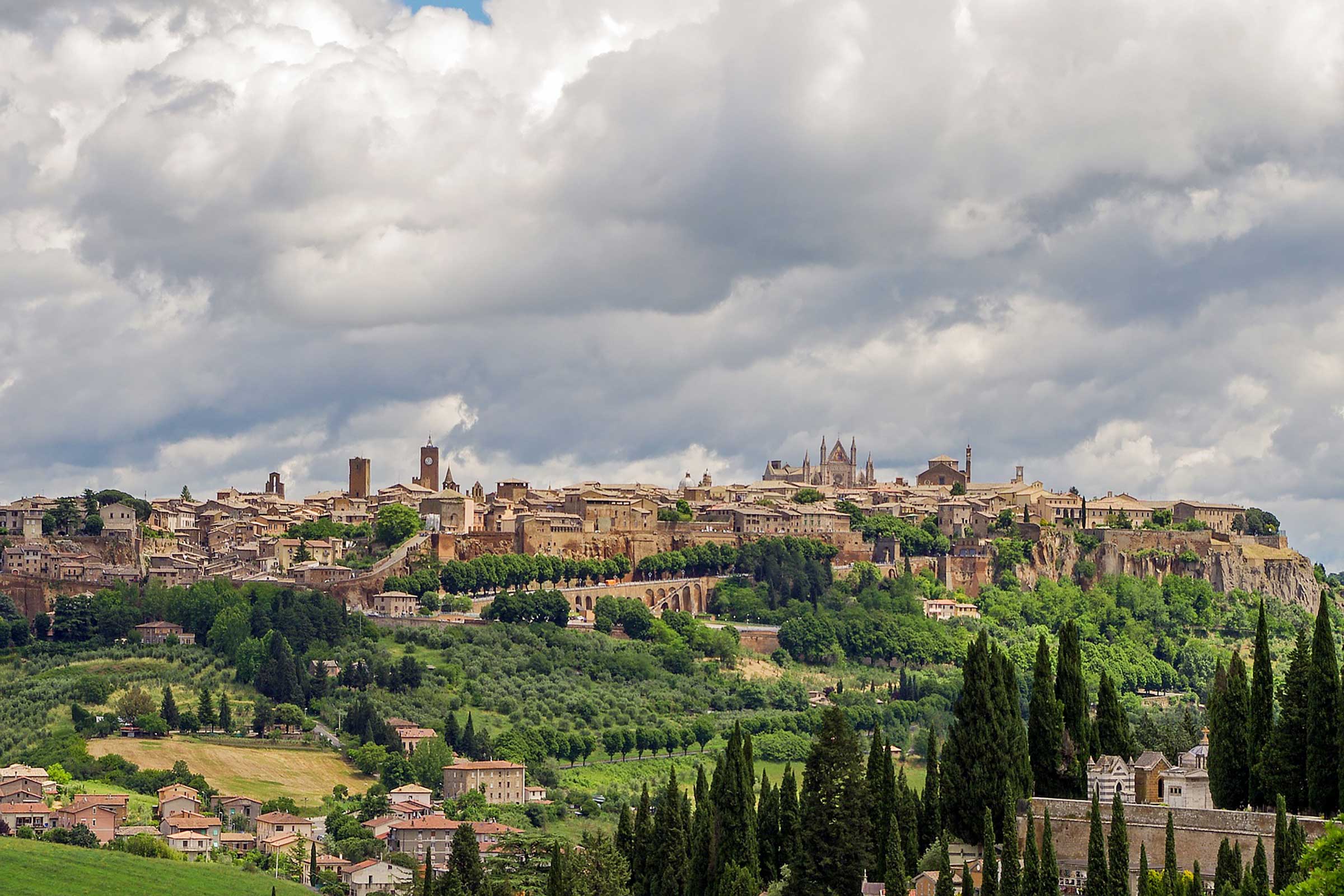What to see in Orvieto
Orvieto proposes itself to tourists as a city strongly linked to its traditions. These traditions linked more to the craftsmanship of wood, wrought iron, lace and ceramics, together with the ease of pedestrian access to the historic center constitute a strong incentive for visitors and tourists.
Among the events that attract hundreds of visitors we remember the " Corpus Domini " and the " Pentecoste " (also known as the feast of the palombella), and for music lovers we remember the International Jazz Music Festival between December and January.
Orvieto yesterday and today
If you pass from the volcanic landscape to the rolling hills and plains of alluvial origin then we are definitely visiting Orvieto.
The peculiarity of the landscape, as if it were an island emerging from the volcanic landscape, strikes and attracts visitors. City of art and one of the most important of Etruscan origin, thanks to its central position it has always been considered a singular, mysterious city with a strong charm.
The historical and archaeological evidence testifies to a strong expansion from a commercial point of view in the sixth century BC, a period in which Orvieto represented one of the main centers of the Etruscan civilization .
The city today is very rich in architecture and decorative elements in which the different cultural influences that have used the local environment with original reworkings are highlighted.
Today the fame of Orvieto, as well as its history, is also linked to the recent winemaking and artisan tradition, and attracting many visitors it also offers a great variety of accommodation facilities.
Orvieto Cathedral
Elevated on an audience of seven alternating red and white steps, the Cathedral of Orvieto is one of the greatest medieval architectural achievements in Umbria.
It was built over several centuries between the thirteenth and seventeenth centuries, undergoing various changes.
The foundations and the skeleton of the building are in tuff, the external cladding, except for the facade, is in isometric rows of travertine and basalt. Of extraordinary beauty are the facade, the bas-reliefs and the statues, but also the portals and the three internal naves.
The façade is in the shape of a gigantic ogival triptych, in which the reliefs act as structural and unifying elements, and the mosaics accentuate the geometry of the architecture. The backbone of the building is made up of four beam pillars that rise from a base of sturdy pillars and are crowned at the top by spiers.
The four pillars between the doors are covered with marble slabs with bas-reliefs. The reliefs represent, starting from the left pillar, the stories of the old and the new Testament and scenes from the Novissimi.
The three portals bear bronze shutters and have reliefs depicting the Works of Mercy. Above the pillars we find the statues of Lorenzo Maitani depicting the symbols of the Evangelists, and other statues of saints are also found above the cusps and spiers at the top. head of the Redeemer.
The rose is inscribed in a square, decorated at the corners by mosaics depicting the four doctors of the church: Sant'Agostino, San Gregorio Magno, San Girolamo and Sant'Ambrogio . The interior of the Cathedral is of a basilica type with three naves divided by ten columns and two pillars with rich capitals.
The internal complex with its dichromy, the grandeur of the Romanesque forms related to the primitive conception, the luminous median nave, the numerous light effects, reveals a unitary space that appears solemn and majestic.
Among the most fascinating works kept inside the Cathedral we find a cycle of frescoes by Beato Angelico and Luca Signorelli in the Cappella Nova, the table depicting the Madonna dei Recommended by Lippo Memmi, the reliquary of the Corporal by Ugolino di Vieri and the fresco of the Majesty of Gentile da Fabriano contained in the Corporal Chapel completed by Giovanni di Micheluccio.
To visit
Monuments
- The dome
- Palace of the Seven
- Church of Sant'Andrea
- Church of San Domenico
- Church of San Giovenale
- The Well of San Patrizio
- Palazzo del Capitano del Popolo
- Opera del Duomo Museum and Emilio Greco Museum of Modern Art
- Mancinelli Theater
- Well of the Cava
- Necropolis of the Crucifix of Tufo
- Nativity scene in the well of the Cava
- Torre del Moro
Museums and galleries
- Emilio Greco Museum
- Faina Museum
Museums in Orvieto
National archeologic museum
Since 1983 it has been housed in the loggia on the ground floor of the Martino IV palace . It includes materials from the archaeological section of the Museo dell'Opera del Duomo and finds from the Orvieto necropolis and urban archaeological areas
Emilio Greco Museum
Set up in 1991 on the ground floor of Palazzo Soliano and divided into two naves, it collects the works donated to the city by the Catania sculptor Emilio Greco. The collection includes 32 sculptures and 60 graphic works.
Opera del Duomo museum
It contains a vast collection, consisting of paintings, sculptures, sacred objects and furnishings coming mainly from the Duomo, but also from some private donations. The collection was divided into two large groups, the medieval works placed in the papal palaces, while the Renaissance, mannerist and up to the end of the eighteenth century placed in the Soliano palace.
At the end of 2007 the Sinopie room and the Fresco gallery were opened. The first houses the exceptional panels of the sinopias of the fourteenth-century frescoes of the Corporal chapel, a group of paintings, sculptures, silver and liturgical objects; while the gallery of frescoes houses a series of murals illustrating Orvieto's production between the 13th and 15th centuries.
